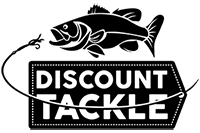
Mastering the Art of Umbrella Rig Fishing: A Comprehensive Guide
The Umbrella Rig, also known as the Alabama Rig, has revolutionized the fishing world with its ability to mimic a school of baitfish and entice hungry bass to feed. While it may seem intimidating at first glance, fishing with an Umbrella Rig is well worth the effort. In this guide, we'll delve into the techniques, tips, and strategies needed to effectively fish an Umbrella Rig and increase your chances of landing trophy-sized bass!
Understanding the Umbrella Rig
Before diving into the specifics of fishing with an Umbrella Rig, it's essential to understand its components and how it operates. The Umbrella Rig consists of a central wire frame with multiple arms extending outward, each equipped with a lure or bait. This setup creates the illusion of a group of baitfish swimming together, making it irresistible to predatory fish.
The best times for using an Umbrella Rig for bass fishing are typically early spring and late fall. During these periods, bass are more active and feed aggressively as they transition between seasons. However, Umbrella Rigs can be effective year-round in certain conditions, such as when targeting suspended bass in deep water or when fish are actively feeding on schools of baitfish. Flexibility and adaptation to changing conditions are key to maximizing success with an umbrella rig throughout the fishing season.
Choosing the Right Rig
When selecting an Umbrella Rig, consider factors such as the number of arms, the size and weight of the rig, and the type of lures attached. Rig configurations can vary, with some featuring three to five arms or even more. Choose a rig that matches the size of the baitfish in your target area and consider the regulations regarding the maximum number of hooks allowed.
Pictured above is the Picasso Bait Ball Finesse with 5 arms. This particular one is rigged with two dummy heads, allowing it to be fished in bodies of water that only allow three hooks per lure. The YUMbrella Flash Mob Jr. is another great smaller profile option, although very similar in size it features Colorado Blades instead of Willow Blades. It is always a good idea to double-check and do some research on the components of the rig you decide to purchase. One small detail can make all the difference when you are out on the water.
Selecting the Right Attachments
The key to successful umbrella rig fishing is choosing the right lures to attract your target species. Go for lures that closely resemble the baitfish found in your fishing location. Experiment with different colors, sizes, and styles to determine what triggers the most strikes from hungry bass in your waters. For example, these two were keyed in on Shad, so a natural-colored YUM Pulse paddle tail swimbait was the ticket.
Don't be afraid to switch up the sizes of your swimbaits. Keep in mind that a natural bait ball is a mix of small and large fish. Place the larger swimbaits on the back of the rig, with the smaller swimbaits serving as an added flash and attractant to get the fish to react aggressively. We suggest staying in the 3-5 inch range, anything larger will add unnecessary weight to the rig. Brands like Z-Man, Keitech, Strike King, Berkley, and Zoom all make great soft plastic paddle tail swimbaits.
Rigging Your Umbrella Rig
Proper rigging is crucial for ensuring your Umbrella Rig performs optimally in the water. Start by attaching the rig to your main fishing line using a strong knot or other secure connection like a heavy-weight snap. Ensure that the rig is properly aligned and that each arm is free to move independently. Check the action of the lures to make sure they swim naturally and convincingly.
Casting and Retrieving
Casting an umbrella rig requires a slightly different approach than traditional single-lure setups. Begin by casting the rig out into the desired area, allowing it to sink to the desired depth. Once the rig is in position, start your retrieve, using a steady, rhythmic motion to mimic the movement of a school of baitfish. Vary your retrieval speed and depth until you find what triggers the most bites.
Locating Productive Areas
To increase your chances of success with an Umbrella Rig, it's essential to identify productive fishing areas where predatory fish are likely to congregate. Look for structure such as submerged rocks, fallen trees, or underwater ledges, which provide cover and ambush points for predatory fish. Pay attention to changes in water depth, temperature, and current flow, as these factors can influence fish behavior and movement.
Adapting to Changing Conditions
Successful Umbrella Rig fishing requires adaptability and a willingness to adjust your approach based on changing conditions. If you're not getting bites, try switching up your lure selection, retrieval speed, or fishing location. Pay attention to subtle cues such as bird activity, surface disturbances, or baitfish schools, which can indicate the presence of predatory fish.
Tips for Success
- Experiment with different rig configurations, lure types, and colors to determine what works best in your fishing area.
- Keep your gear organized and easily accessible, so you can quickly change lures or adjust your rig as needed.
- Practice patience and persistence, as umbrella rig fishing may require some trial and error to achieve success.
- Respect local fishing regulations and guidelines, including limits on the number of hooks allowed and catch-and-release practices.
Conclusion
Umbrella Rig fishing offers an exciting and effective approach for targeting predatory fish in various freshwater and saltwater environments. By understanding the fundamentals of rig setup, lure selection, and fishing techniques, you can increase your chances of success and reel in quality fish. Multiple catches in one cast are very common with this rig. So, grab your gear, tie on an umbrella rig, and get ready to experience a new way to catch 'em!




